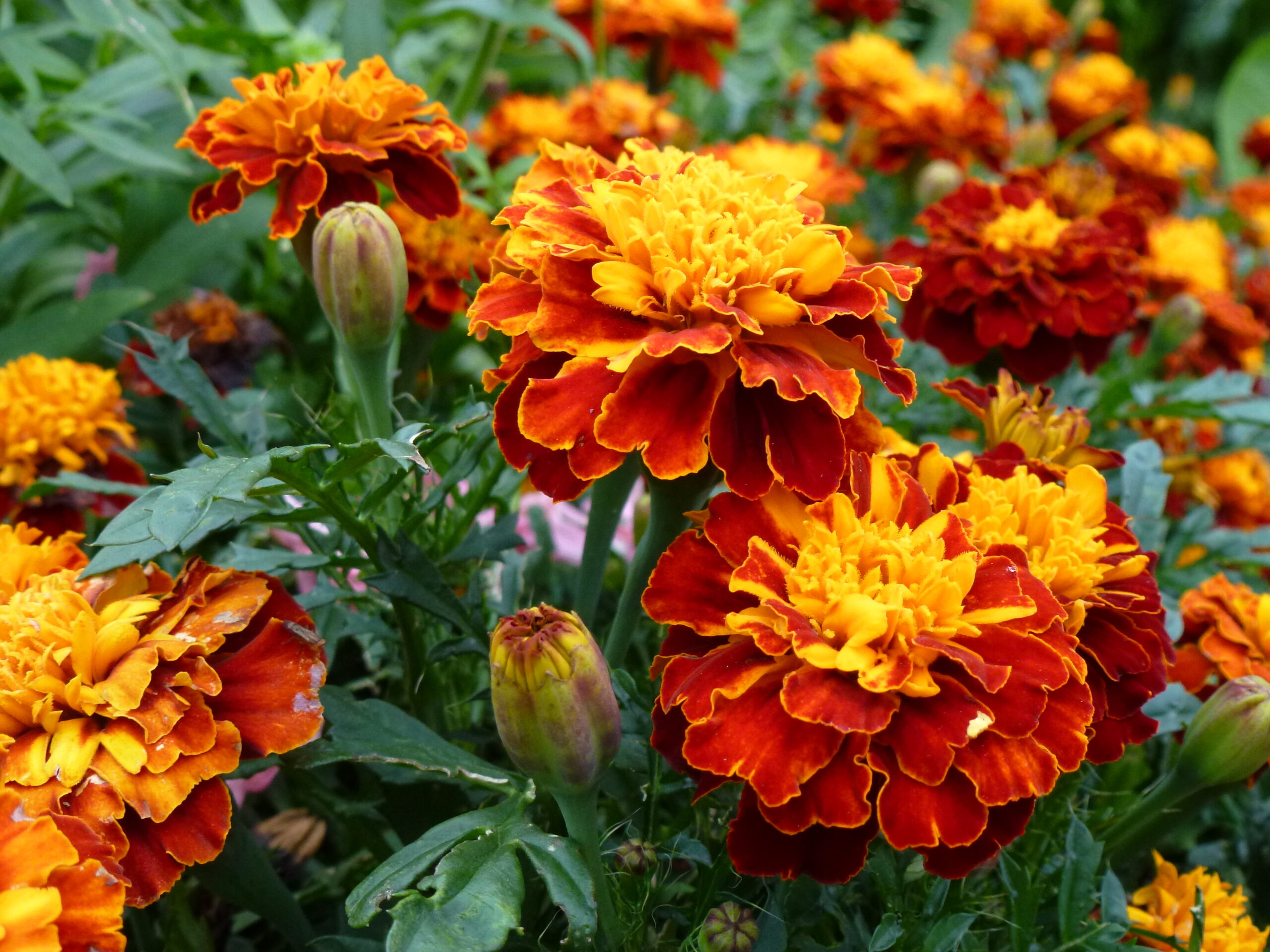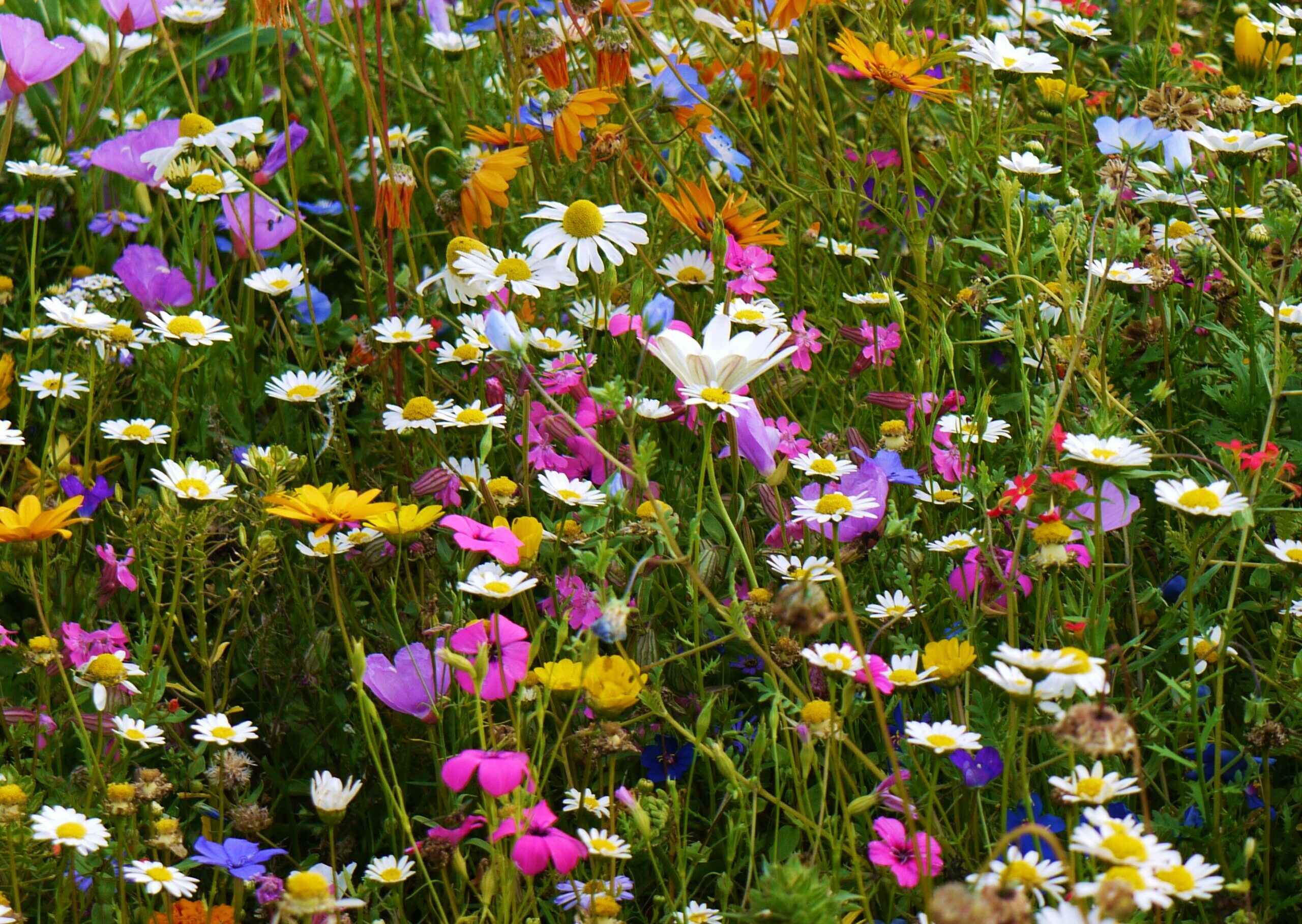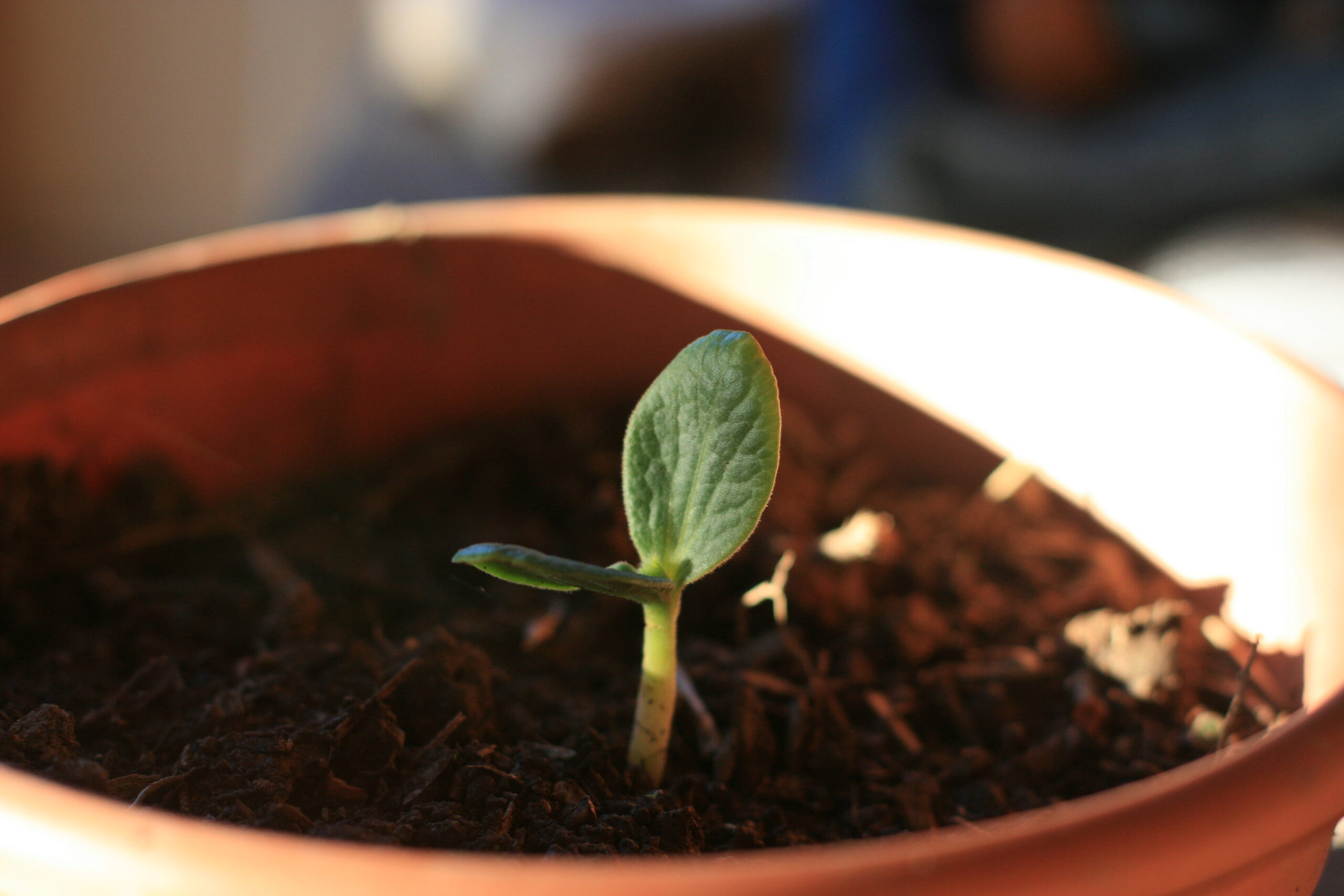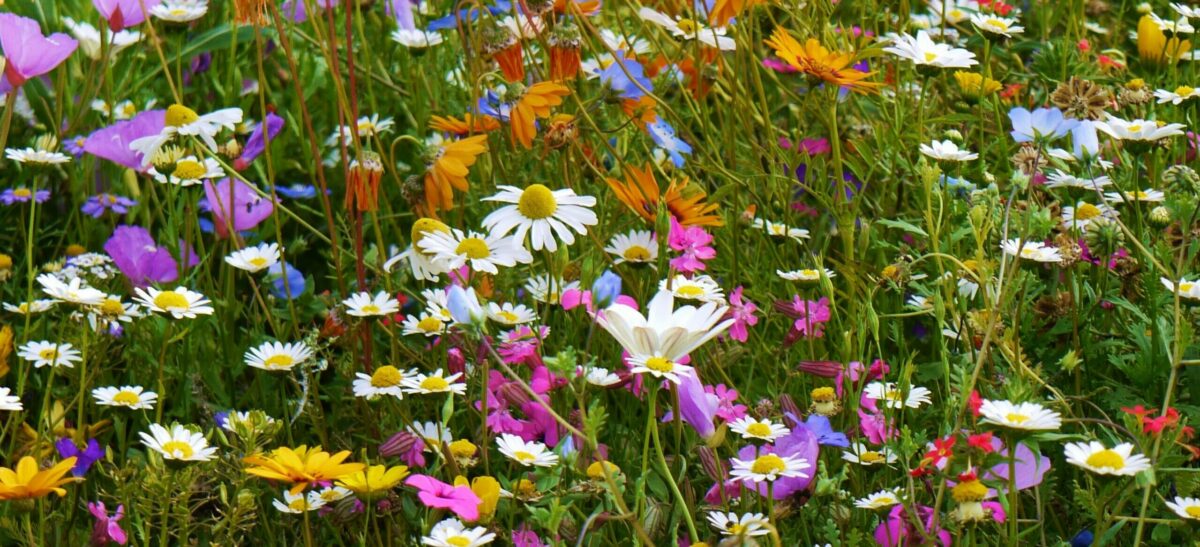Planting and watching seeds grow is one of the most rewarding parts of having an outdoor space. From a young age I can vividly remember chilly winter trips to the garden centre, picking out different bulbs and seeds to plants in time for spring, followed by an agonising wait for the last few frosts to pass to allow us to start planting. This patience was however rewarded with my favourite task – exuberantly poking a million holes in compost-filled trays – before carefully sowing the seed in the soil and gently covering them in a blanket of compost.
To this day, I still get just as excited when spring is around the corner, and I can finally turn my wintery, plain garden into a hub of vibrant flowers and wildlife. But with so many different bulbs and seeds out there, all of which working to very different schedules, it can sometimes be overwhelming when thinking about where to start, what to sow when, and where.
Here, we provide a detailed Seed Sowing Calendar to make sure you’re on-track for those beautiful spring blooms in just a few months time.

January:
January is still very much in the grasp of winter, so most seeds sown outside will perish due to the cold and frosts – therefore it is recommended that seeds are planted in trays or pots that can be kept in an enclosed greenhouse or indoors in a warm, dry, sunny place to ensure successful germination.
Sowing this early in the year means that you’re more likely to get a good, healthy crop come springtime, but it does require a lot of patience and attentiveness.
Sweet peas – Lathyrus odoratus
Sweet peas are one of my favourite flowers and produce vibrant, fragrant blooms in a range of stunning colours. They are natural climbers, therefore they should be grown up a cane, netting or trellis, and can reach approximately 2m in height. Seeds should be planted 1cm deep in trays or individual pots filled with compost in late winter (January – February) and watered 2-3 times a week. As soon as the last frost is over, and the soil is loose and pliable, transfer the seedlings outside. When the plants are tall enough to reach the canes, manually wrap the stems securely, but gently, around them – the plants will naturally take to climbing the higher they grow.
Carnations – Dianthus caryophyllus
Carnations produce small, fringed flowers on long stems and should be grown in small to medium pots or planters with good drainage. The seeds should be planted about 0.5 cm deep, in potting soil or compost, covered in a layer of soil and pressed down firmly. Place them in a warm, sheltered space inside and water 2-3 times a week using a spray bottle. When the seedlings reach 5cm tall, transfer outside after the frost has passed.
You can also sow carnations directly into the garden once the frosts are over, normally in late April, however it’s unlikely they will bloom the first year if they are sown this late in the spring.
Lobelia – Lobelia erinu
Lobelias are beautiful, colourful little bedding plants that are very hardy and will produce flowers from early summer to mid autumn. They are easy to start indoors, and need well drained, loose soil to thrive. Sow the tiny seeds liberally across the surface of the soil in a large seed tray, cover loosely with a thin layer of compost, and gently press down to ensure the seeds are fully covered. Place the tray in a warm, sunny position and water with a light mist. Ensure the soil stays moist while the seeds are growing inside and transfer into the garden once the frosts have ended.

February:
February is the ideal time to start sowing most summer bedding plants, as well as perennials that grow year on year. Due to the colder temperatures, it’s recommended that most flower seeds are still grown inside to begin with.
French Marigolds – Tagetes patula
Marigolds are very easy flowers to grow and are equally easy to maintain once they’re bedded into the garden. Fill a tray with compost and press the seeds 1cm deep into the soil, then cover lightly with another thin layer. Plant each seed 5cm apart to allow for growing room, and water every couple of days to keep the soil moist – but not soggy. You can then plant the seedlings outside in early spring (mid to late March) in pots, planters, beds or hanging baskets when they are a few inches tall and the weather is milder. Marigold seeds can also be planted directly outside, but you should wait until late spring (April – May) or early summer (May – June) to do so, otherwise they may not germinate in the cold weather.
Snapdragons – Antirrhinum majus
Snapdragons are bright, annual plants that come in a wide range of colours and heights, and attract an array of garden insects. They require a lot of light to germinate, so make sure you don’t cover the seeds with too much soil. Simply put the seed on top of the soil in a tray, cover with a very thin layer of compost and compress with your hand, before watering once a week. Place in a warm, very sunny location and, if sown in one large tray, thin the crop to one seedling per pot when the seedlings have developed 2-3 leaves. Snapdragons can be transferred into the garden after the final frost of spring and should be spaced 30cm apart to give them enough room to grow into full blooms.

March:
By the time March comes around, the soil is slowly starting to warm up and frosts are a lot less frequent. During this time, some of the toughest flowers can be sown directly outside, as well as summer-flowering bulbs.
Cornflowers – Centaurea cyanus
Cornflowers are small, vibrant blue flowers that grow best in full sunshine. They can tolerate freezing temperatures, so these seeds can be planted outside throughout the winter. If you are planning to sow Cornflowers nearer spring, plant the seeds straight into soil or planters about 5cm apart and 1cm deep, and water once every 3–4 days. Cornflower seeds are loved by many garden birds, so to make sure your hard work isn’t wasted, ensure they are covered with a good layer of compact soil.
Cornflowers take approximately 10 weeks to flower if they are planted in spring, so these beautiful flowers will brighten up your garden in no time!
Wildflower mixes (native)
Late March is the perfect time to plant your mixed wildflower seeds to produce a beautiful range of native flowers, colours and scents, and most importantly provide food, shelter and habitats for key pollinators such as bees. Wildflowers are best sown straight outside in large beds or planters. Break up any large lumps of soil, then generously sprinkle the seed mix before carefully raking over the seeds, ensuring they are fully covered up. Gently water the area after planting, ensuring that you don’t dislodge the seeds with too much water, and watch them bloom!
Water your wildflower garden twice a week to ensure the soil doesn’t dry out, particularly over the hot summer months.
If you are keen to begin your wildflower garden early, you can plant them in February if the weather remains mild and dry.
Cosmos – Cosmos Bipinnatus
Cosmos can be grown both inside and outside, and thrive is sunny areas of the garden. They germinate very quickly and produce vibrant, tall flowers. If you prefer to start your flowers inside, yielding blooms in early summer, sow the seeds in individual pots in mid to late March in fresh, loose compost. Each seed should be 2mm deep in the soil and should be covered in a thin layer of compost. Place the individual pots or trays into a larger seed tray and water from below. Transfer into beds in the garden four to six weeks later, or after the last frost.
If you prefer the ease of planting seeds directly outside, or are a little late to the party, wait until the weather is mild and drier in early May before scattering the seeds straight onto evenly raked soil and covering lightly. Water every few days until the plants are well established, but be careful not to overwater as this will cause fewer buds to grow on each plant.

Top Tips:
– Make sure to label your seed trays or pots if you’re growing a variety of different seeds at once, as it is very easy to get mixed up!
– Ensure that any seeds grown inside are only kept in moderately warm places – too hot a temperature, such as by a radiator, can cause the seeds to perish, so it’s recommended to take advantage of sunny windowsills and French doors instead.
– It can be beneficial to ‘pinch out’ bedding plants in the early stages of growth to ensure they focus their energy on big, strong, bushy blooms, rather than becoming tall and leggy. This helps produce side shoots that should all bear flowers, but it is advisable not do so until the seedlings have grown at least two sets of leaves or you risk damaging the plants. To pinch out a plant, gently cut the growing tips just above the side shoots, repeating on as many stems as you wish until it resembles the shape you’re after
– Even if you miss the opportunity to start growing your seedlings inside, it’s rarely too late to grow your seeds if they are in season. Instead, you can plant them straight outside when the milder weather arrives, and will simply have later blooms – so you can enjoy beautiful flowers during the summer months instead.

